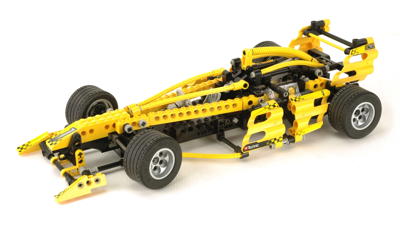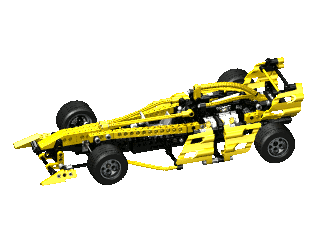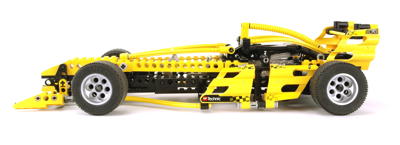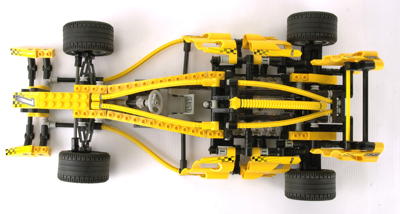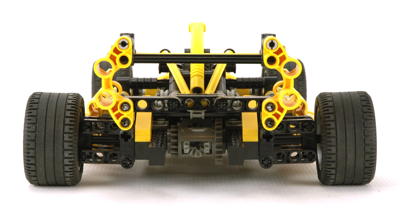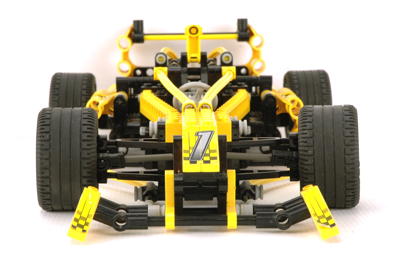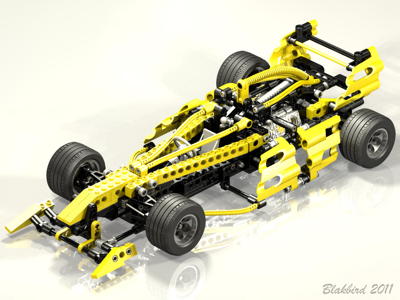Features
|
|
Steering
The front wheels can be steered using a wheel at the driver's
position. The wheel drives an axle connected to a crankshaft
element. The crank drives a pair of flex system axles (with
sleeves) connected via an
end-to-end connector. The ends of the flex cables attach to the
ball joints of the steering arms. The steering arms are suspended
and the upper and lower ball joints by control arms.
There is no particular reason for the flex system in this case.
Rigid parts would have worked as well, but I'm always glad to
have more flex system parts.
|
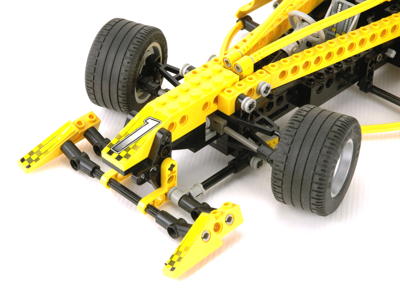
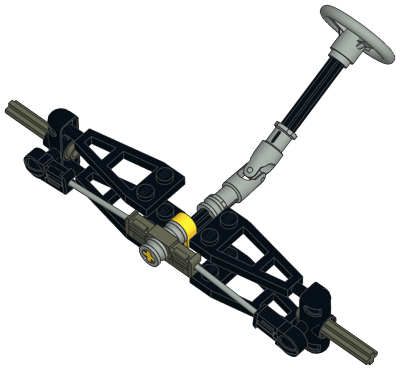
Click for an animation of the
steering in motion.
|
|
Engine
The rear wheels are used to drive a V-6 engine.
The engine is made from cylindrical engine elements. The two
cylinder banks have a V angle of greater than 90º. The
crankshaft is
offset 1/2 stud from center, giving the pistons a stroke of 1
stud. Each pair of pistons shares a common crank pin.
Because the crank pins are each offset 180 degrees, the forward and
back cylinders are synchronized. This can be seen clearly in the
animation.
In this particular model, the exhaust pipes are simulated with black
ribbed hoses. There are only 4 pipes despite the 6
cylinders. The connection between the engine and differential uses
a rare crown gear.
|
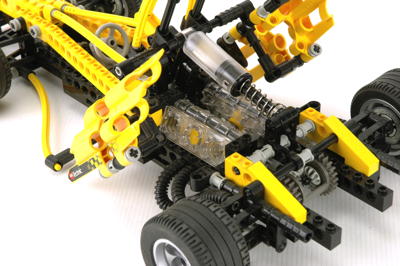 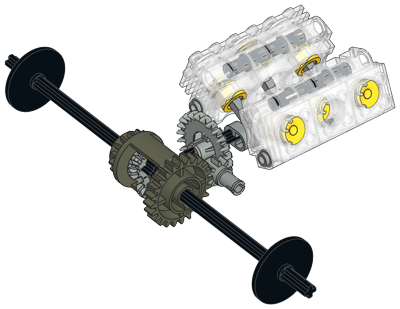
Click for an animation of the
engine in motion. |
|
Differential
The rear axle is "live" and uses a differential
gear which incorporates a built in 24 tooth ring gear. The
differential is made
to house 3 of the 12 tooth bevel gears. One is on each axle,
and one planet gear in the middle allows the axles to turn at different
rates. |
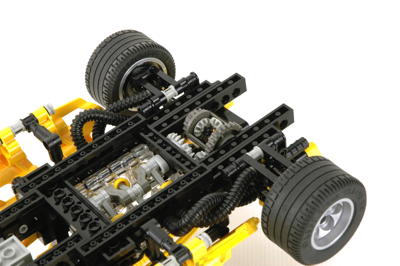 
Click for an animation of the
differential in motion. |
|
Engine Access
The whole back of the body cover can be raised for access to the
engine. This feature uses one of the new spring loaded damper
elements. When in the down position, the damper is slightly over
center and therefore holds the cover down. A slight touch on the
gray ball joint pushes the damper over center and it then raises slowly,
getting slower as it approaches the end of travel. The effect is
very realistic. Sadly stop motion does not capture the effect
accurately. The only drawback to this system for this model is
that the damper is quite large and conspicuous when the cover is open.
The computer image helps to understand the somewhat complex
kinematics. The side panels are hinged at the red axle pins, and
the spoiler is hinged at the red axle. The different rotation axes
means that the relative angle between these two sections changes as the
cover opens. This can be seen clearly in the animation.
| 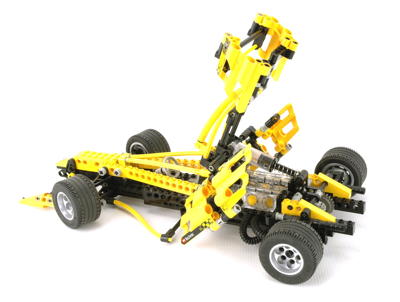 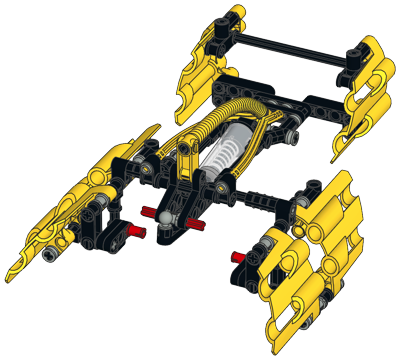
Click for an animation of the engine cover in motion. |
|
Wheels and Tires
This set has 4 of the 49.6x28 VR tires which are perfect for this
type of car. New this year, the wheels are painted metallic
silver. Looking closely, you can also see some discs and stickers
used to represent the brake rotors.
|
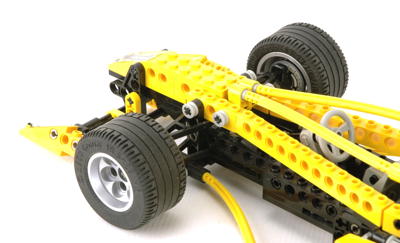
|

